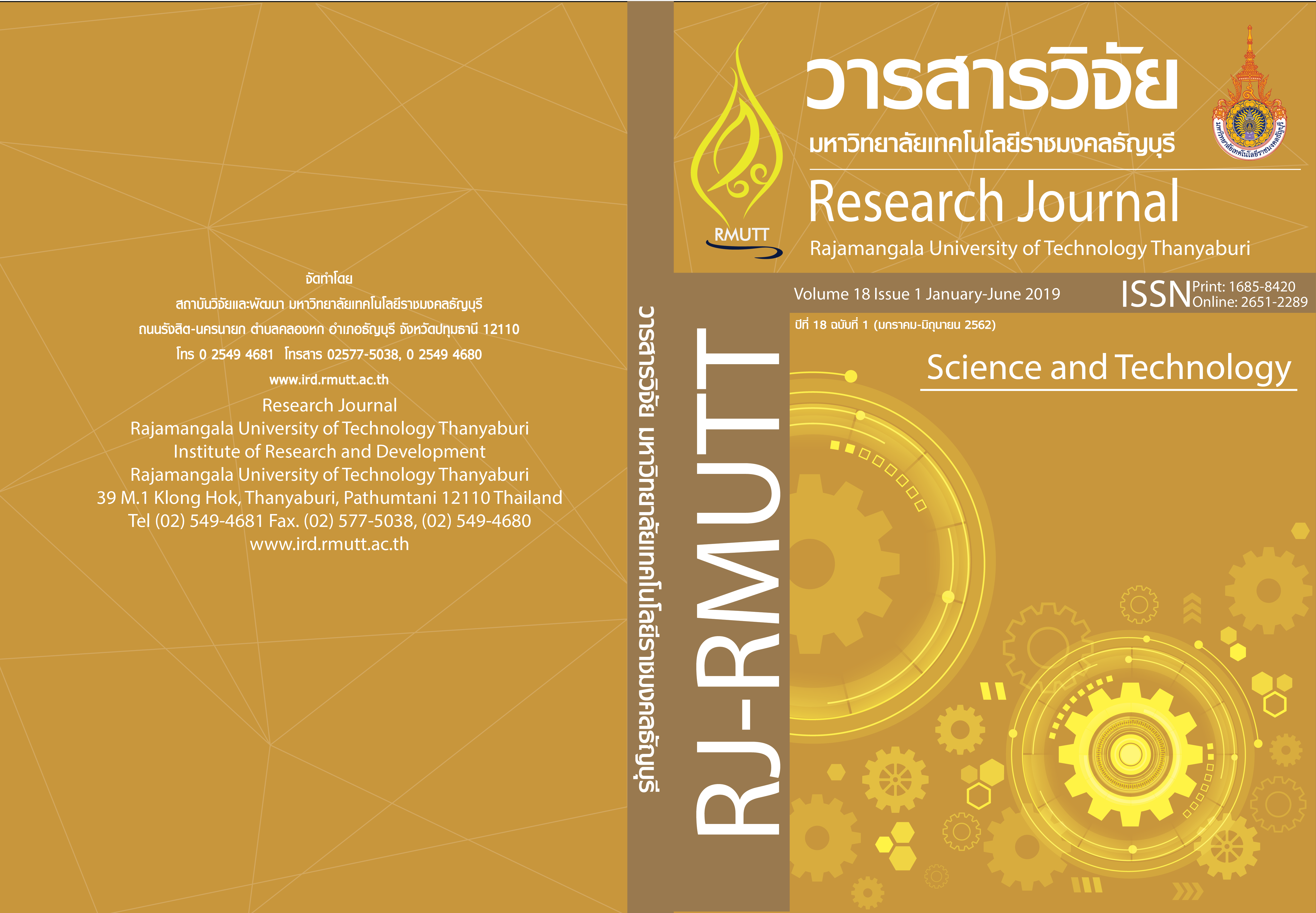The Mechanical Properties and Microstructure’s Study of the Big Knives of Folk Wisdom of Knife Forging Community in 4 Provinces of Thailand
Main Article Content
Abstract
The knife forging is considered to be the wisdom conveyed by the ancestors of each community in every region of Thailand. This is an important to the way of life of the farmers. The objective of this research was to study the mechanical properties and the microstructures of the big knives from four provinces such as Nan, Nakhon Ratchasima, Phra Nakhon Si Ayutthaya and Songkhla provinces. The results of the study shown that, the hardness of the big knives of Songkhla province was higher than Nan, Nakhon Ratchasima and Phra Nakhon Si Ayutthaya province. In case of impact strength, the impact value of the big knives of Phra Nakhon Si Ayutthaya province was higher than Nan, Nakhon Ratchasima and Songkhla province. After hardening, the hardness of the big knives of Phra Nakhon Si Ayutthaya province was higher than Nakhon Ratchasima, Nan and Songkhla province. The impact value of the big knives of Nan province was higher than Phra Nakhon Si Ayutthaya, Songkhla and Nakhon Ratchasima province. The microstructure of the big knives before hardening at nearly the edge of the knife and deeper consisted of pearlite matrix and some of ferrite. After hardening, the microstructure at nearly the edge of the knife was martensite, deeper consisted of martensite matrix and some of ferrite.
Article Details

This work is licensed under a Creative Commons Attribution-NonCommercial-NoDerivatives 4.0 International License.
References
สถาบันส่งเสริมการสอนวิทยาศาสตร์และเทคโนโลยี (สสวท). แหล่งเรียนรู้หมู่บ้าน หัตถกรรมมีดอรัญญิก [อินเตอร์เน็ต]. [สืบค้นเมื่อวันที่ 20 ก.ค. 2558]. จาก: http://fieldtrip.ipst.ac.th/
Rudnicki J, Beer P, Sokołowska A, Marchal R. Low-temperature ion nitriding used for improving the durability of the steel knives in the wood rotary peeling. Journal of Surface and Coatings Technology. 1998;107(1):20–3.
Beer P, Rudnicki J, Ciupinski L, Djouadi MA, Nouveau C. Modification by composite coatings of knives made of low alloy steel for wood machining purposes. Journal of Surface and Coatings Technology. 2003;174–175:434–9.
Michael RN. The history of the metallographic study of the Japanese sword. Mater Charact. 2000;45(4):253-8.
Muneo Y, Toshifumi T, Yochihiro M, Tsuyoshi K, Kunichika K, Taisuke H, Shigekazu M, Takuya O. Study of Japanese sword from a viewpoint of steel strength. J Alloy Compd. 2013;577:5690-4.
ณรงค์ศักดิ์ ธรรมโชติ. ผลของกระบวนการอบชุบความร้อนที่มีต่อโครงสร้างจุลภาคและความแข็งของดาบซามูไร. วารสารวิจัยและฝึกอบรม สถาบันเทคโนโลยีราชมงคล. 2547;8(1):11-15.
Chandler H. Heat Teacher’s Guide, Practices and Procedures for Iron and Steels. ASM International the Materials Information Society, USA. 1995.
Kumar Sinha A. Physical Metallurgy Handbook. McGraw-Hill Company Inc., USA, 2003.

